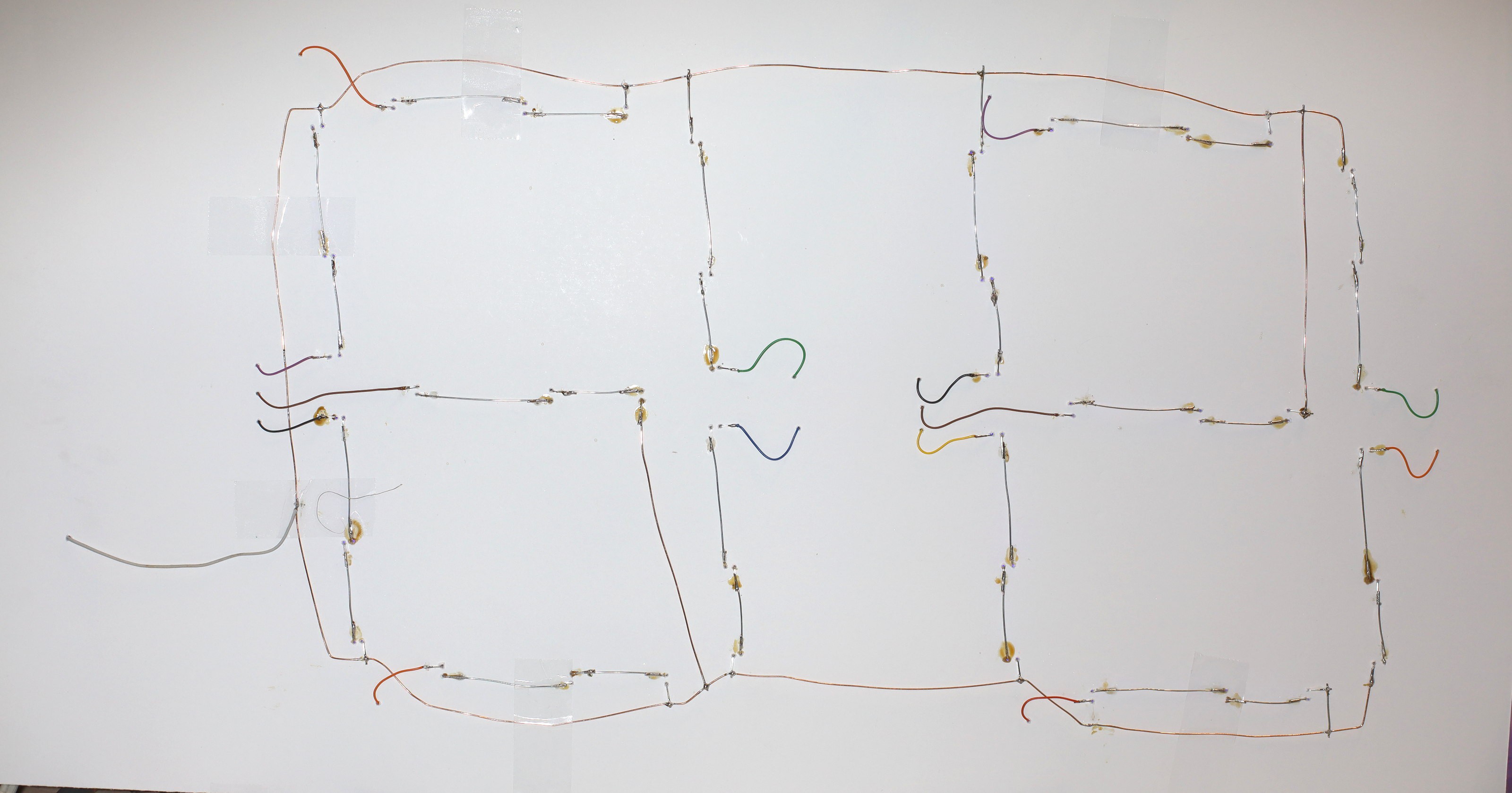
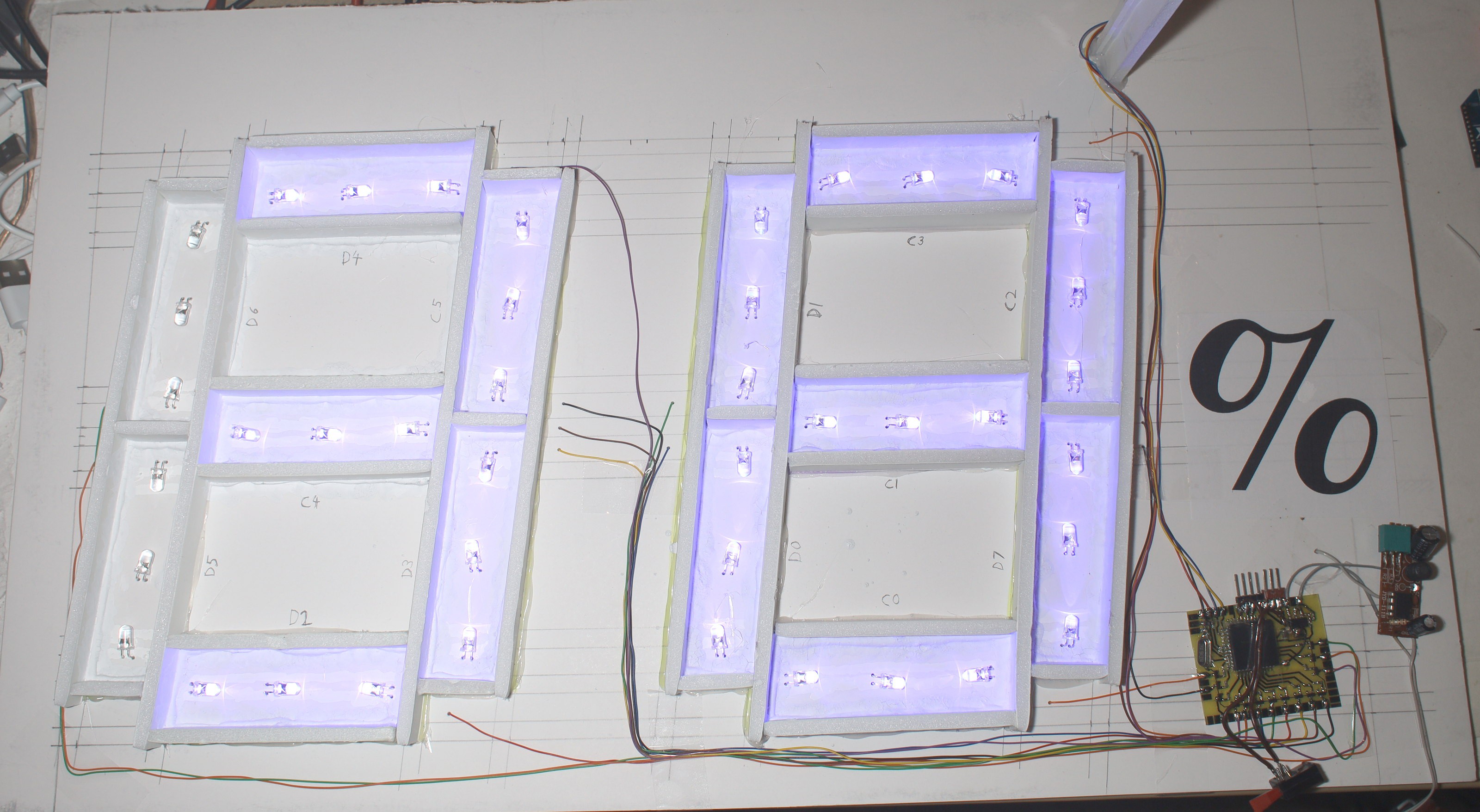
Wiring all 14 segments reminded lions of why no-one builds large LED panels even in China. The 2 heroineclocks were the most complicated displays. When the 14 segment display was wired, the younger lion still had 12 segments to go. Those older displays took multiple days. The younger lion was like the other hikers who still had 12 miles to go. The modern wrapping wire is much easier than the ribbon cable of old. Even though it entails routing every segment separately, it's easier to wrangle & fit in the space.
Ran the LEDs at 8.4V per segment or 2.8V per LED. Maximum power is 1.5W. The AHT20 had to be mounted upside down to keep humidifier deposits out of it. The sensor seems to be slightly too low, but it will never be viewed from above.
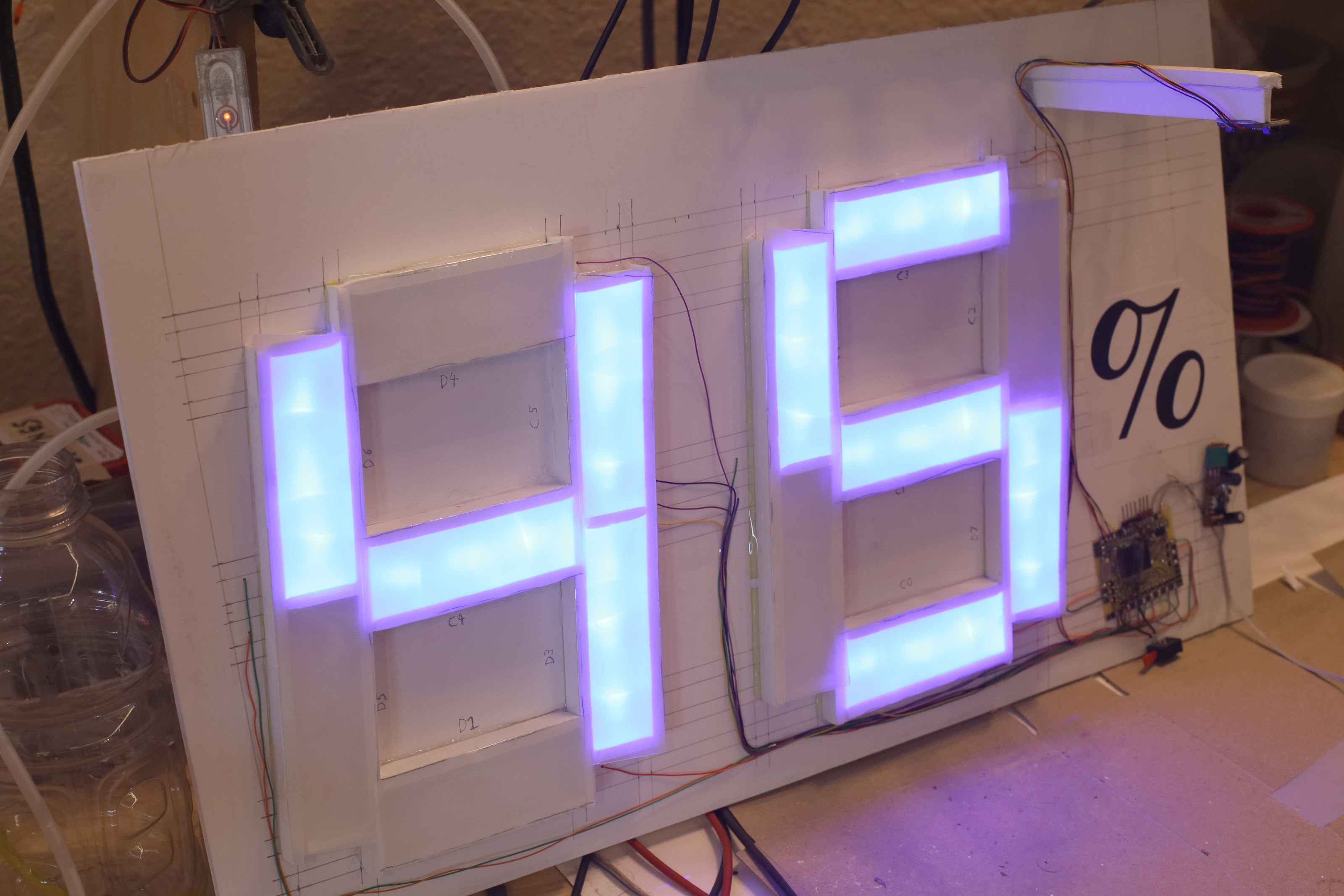
Without paint & with the whiteout being manely flaked off, there technically must be less even lighting, but it's not very obvious. The diffuser cuts through tape & is very brittle so we'll see how long it lasts. A diffuser from a recycled LCD monitor gave maybe a hair more diffusion than wax paper. Must remember if a neighbor ever throws out a TV again to try to recover the diffuser & fresnel lens. Another alternative to rustoleum might be white nail polish.
The blue numeric display looked like cracking a light stick for the 1st time. The same eerie blue from mid 80's july 4 blazed forth in unparalleled glory.
LEDs were previously too expensive to use anything but red, but now that blue is 7 cents per LED, it's time for more colors.
https://www.amazon.com/dp/B01AUI4VYW
The 1st LED panel was 28 cents per red LED.
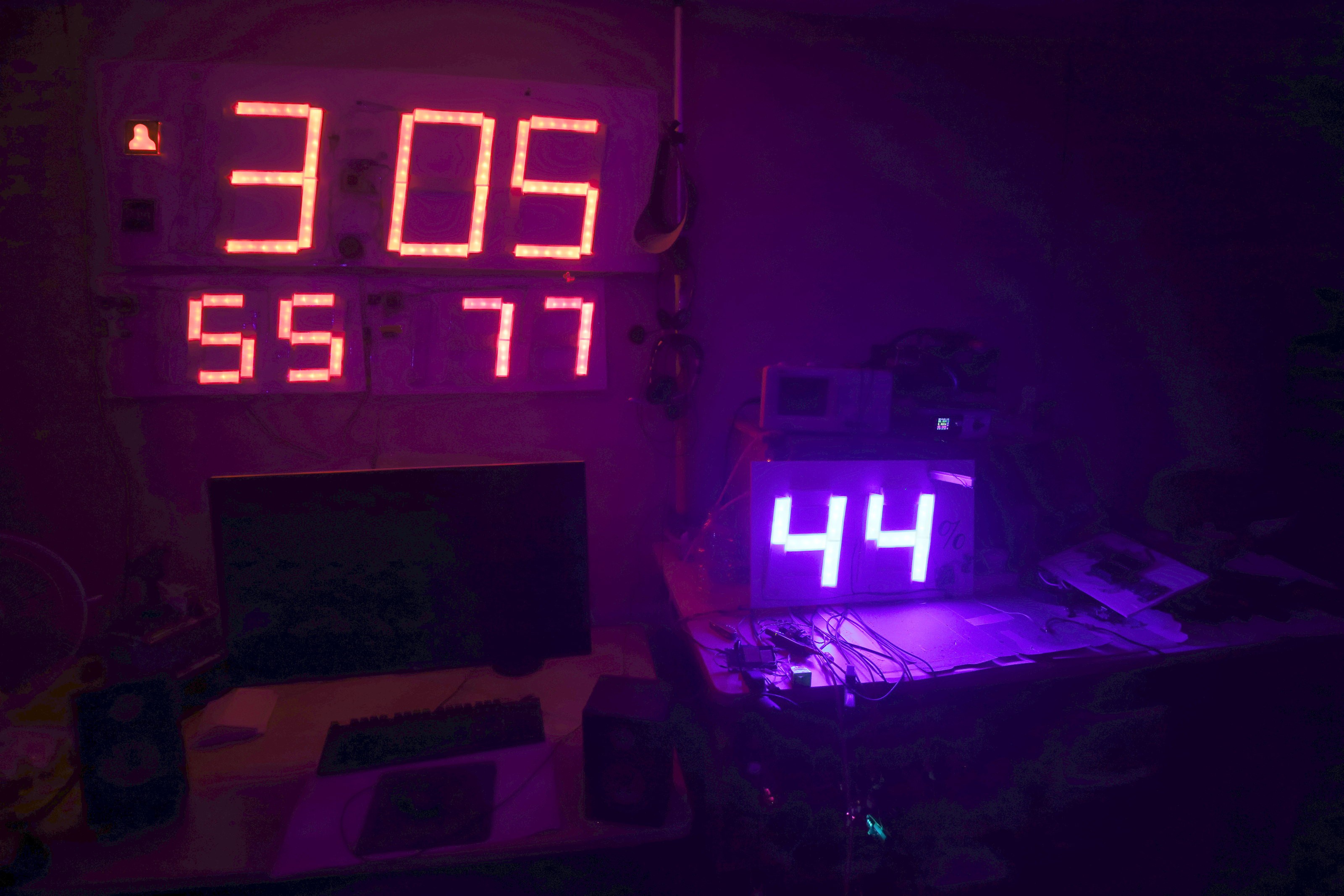
It's much brighter than the other panels at 8.4V per segment. Between 8 & 8.4 is where it overpowers the room lighting but doesn't turn night into day. At under 1W, maybe lions have to get used to sleeping in daylight.
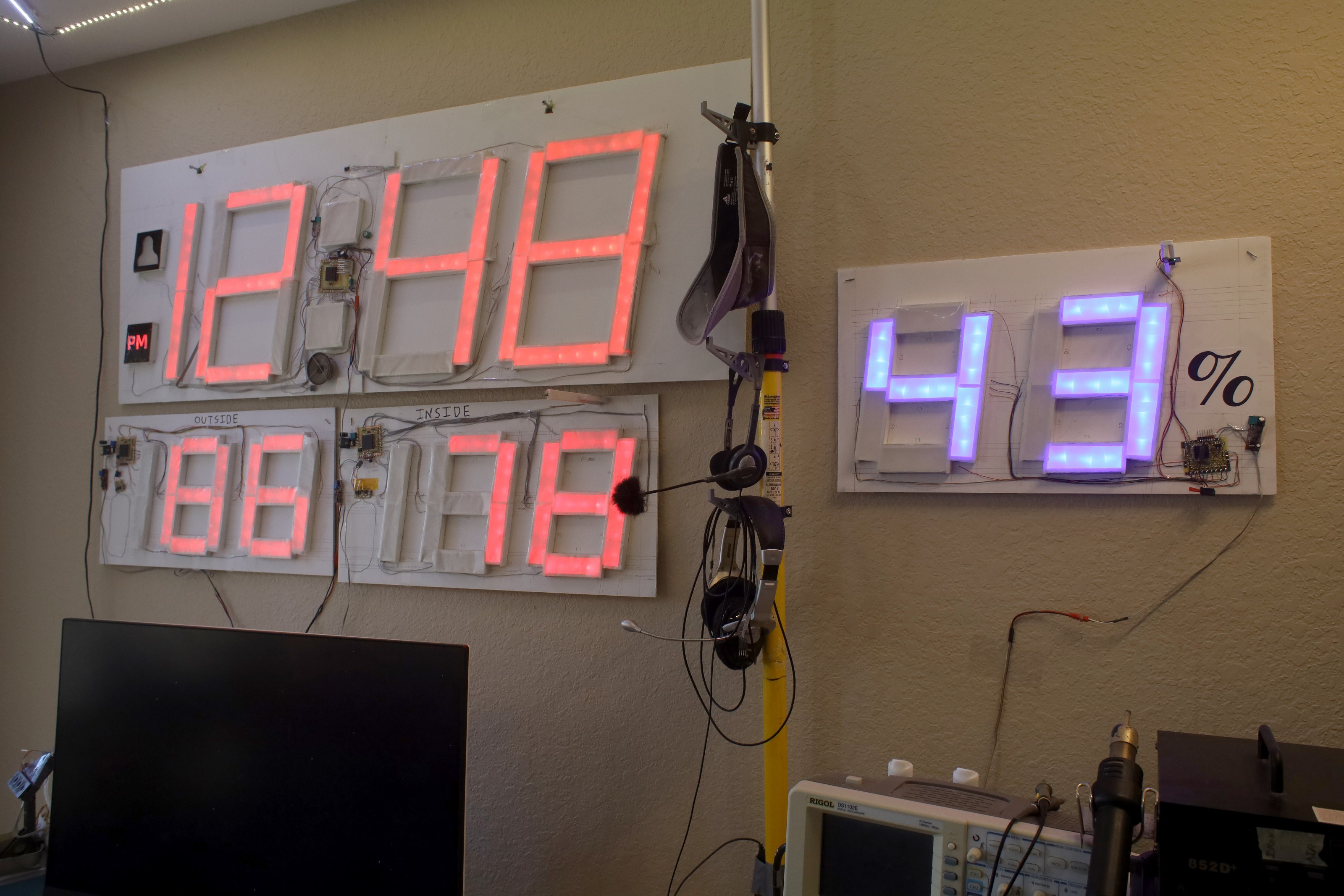
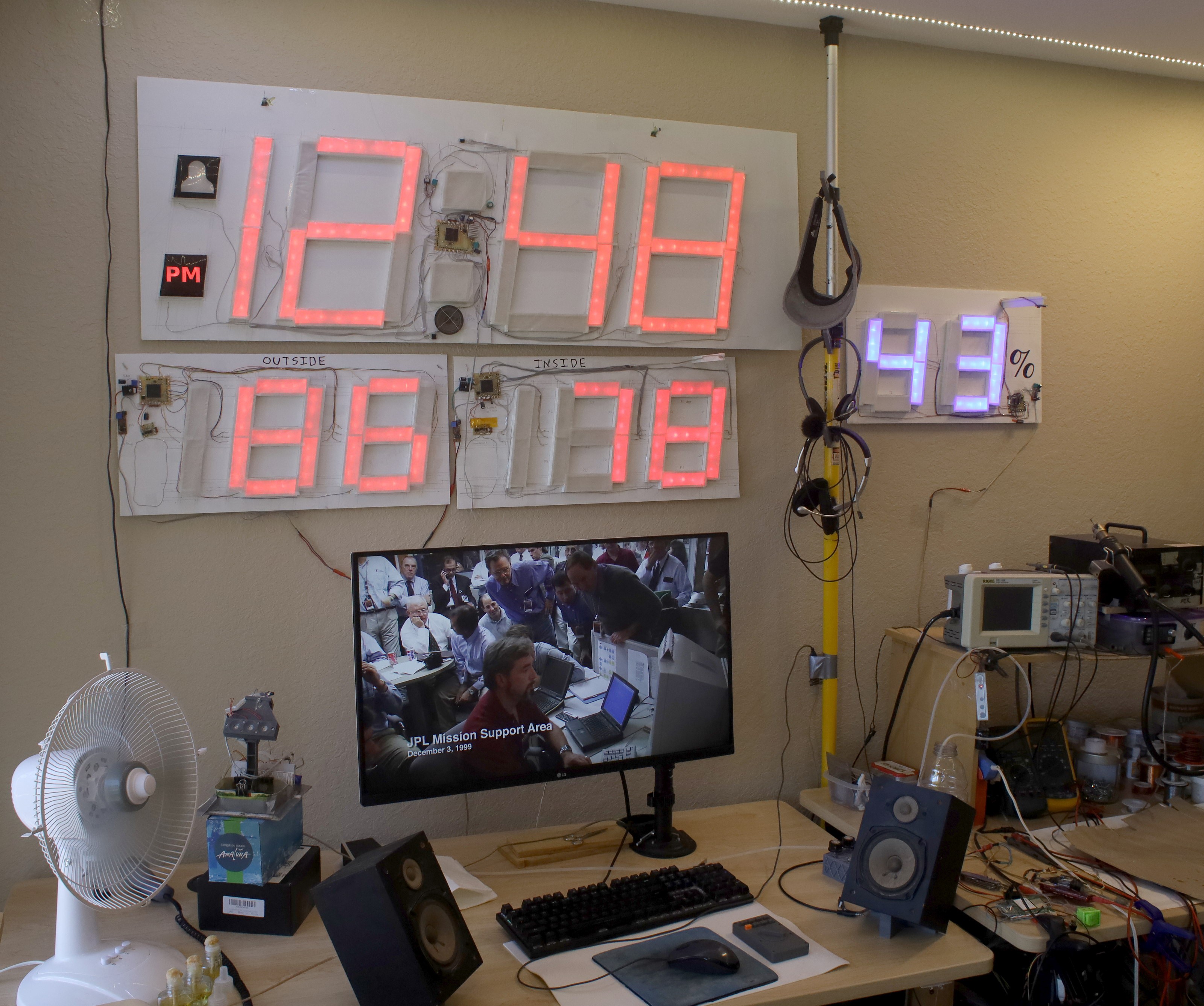
 lion mclionhead
lion mclionhead
Discussions
Become a Hackaday.io Member
Create an account to leave a comment. Already have an account? Log In.